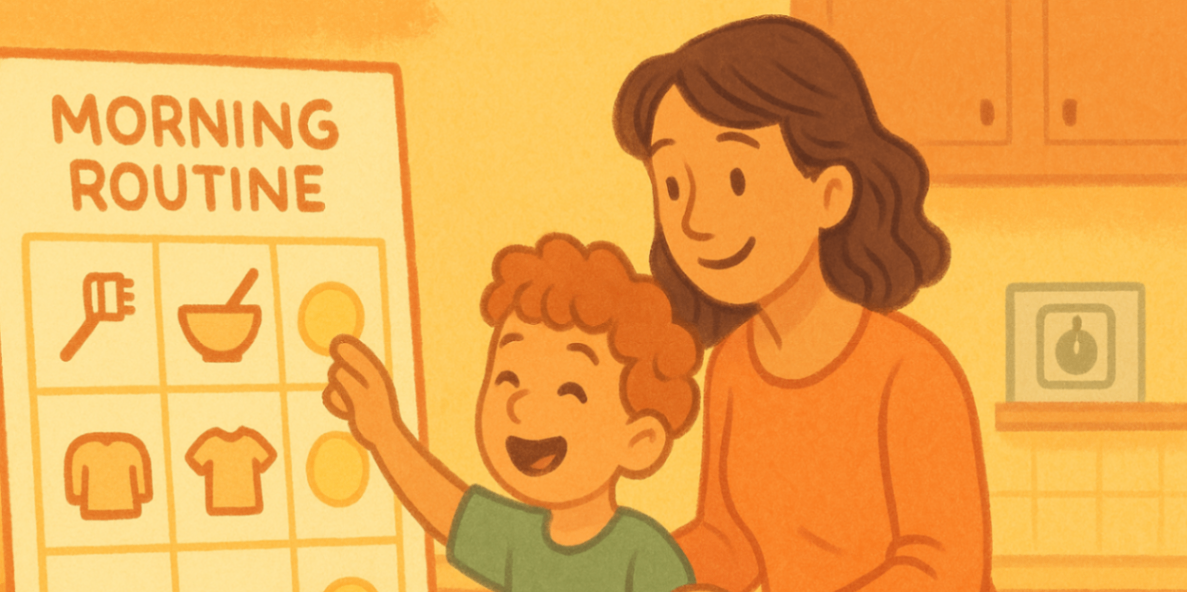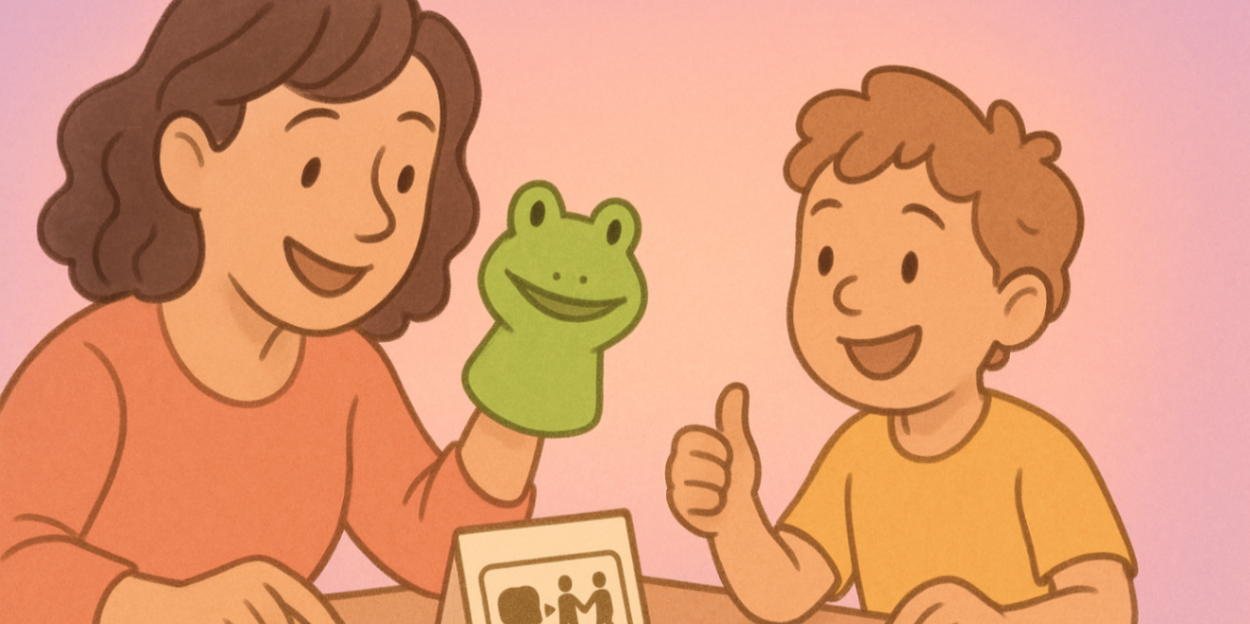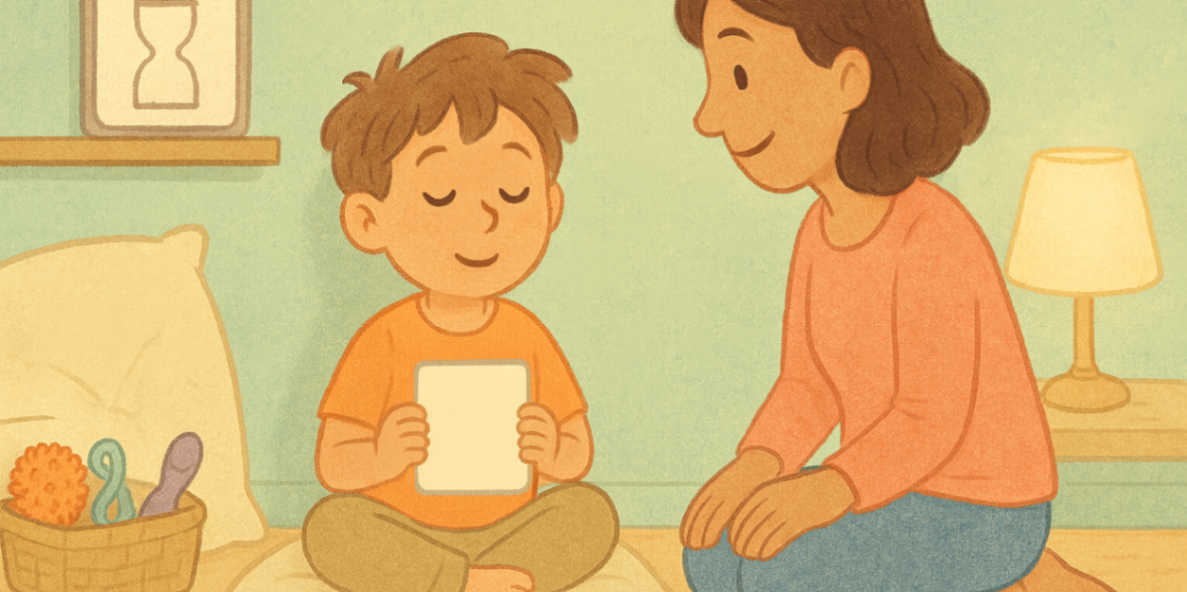
behaviour support strategies for parents: tools to use at home
1 September, 2025
Dealing with your child’s behaviour can be tough. You are not alone in this. Positive behaviour support, or PBS, ishere to help. PBS gives you tools to make life better for your child and your whole family.
Instead of responding to tough behaviour after it happens, PBS helps you look at why your child acts a certain way. With this information, you can make a support plan. The plan lets you work on the things that lead to behaviour problems.
When you use PBS and a good support plan, you can see long-term change. Your child’s learning, feelings, and behaviour may get better. The whole family's quality of life and the lives of children can also be better. This guide will help you with easy ideas for using positive behaviour support and boosting child’s behaviour at home.
Key Highlights
-
This guide provides practical tools for implementing positive behaviour support at home.
-
Planning ahead for challenging situations can prevent difficult behaviour and encourage positive actions.
-
Understanding the reasons behind your child’s behaviour is the first step toward an effective response.
-
Consistency in applying strategies and setting clear expectations is crucial for success.
-
Using positive reinforcement and praise helps improve your child’s behaviour and your family’s quality of life.
Beginner’s Guide to Behaviour Support Strategies at Home

Starting a behaviour support plan might seem like a big task, but you can begin with small and steady steps. The main point of positive behaviour support is to teach and encourage good behaviour before any trouble starts. Being ready in this way helps young children learn important skills.
If you focus on emotional regulation and work to create a good environment, you help your child do well. The next parts will show you the resources for positive behaviour and the steps to follow so you can use a behaviour support plan in your life.
What You’ll Need to Get Started (Resources, Tools, and Mindset)
Before you start, it helps to have some key things ready. If you have the right attitude, you can make things better for you and your child. There is a range of resources that you can use. Some are easy to make at home, and some are from professional services. Having these things set up makes it easier to handle what comes your way. You can then deal with problems with a clear head.
You can change your toolkit to fit your child's needs. You may want to get the following tools ready:
-
A "going-out bag": Fill this with small things that your child likes. Books, pencils, or blocks can keep your child focused while you wait in line or drive somewhere.
-
Visual aids: Use simple pictures or charts. These can show rules and routines in a way that is easy to understand.
-
A notebook: Write down your child's behaviour to spot patterns or what sets things off.
-
Digital tools: Try an app to help with behaviour plans. These can give you data and steps to follow.
You need to stay calm and show patience during this process. You are helping your child learn, and that takes time and lots of practice. If things get tough, you should reach out for specialist behaviour support. This can help you build a plan that works best for your child's special needs.
Step-by-Step Guide to Implementing Behaviour Support
Implementing a plan for positive behaviour management takes a few important steps. These steps help you guide your child in a good way. First, look at the times or places that cause the most trouble for you and your child. It may happen during shopping, when you need to make a phone call, or when visiting friends. To find a way forward, it is important to know exactly what makes these times hard.
When you know what situation is hard, talk to your child before it starts. Tell them what you need or expect from them in simple, positive words. Set easy-to-follow rules about what should happen. Make sure both you and your child understand what will happen if the rules are followed or not followed. Research in the Journal of the American Academy of Child & Adolescent Psychiatry shows that key parts of parent training are very important for managing behaviour that may be difficult. Before you walk into the problem situation, go over the rules again with your child.
It is always important to use consistency. Always do what you said you would do and keep any promises about rewards or consequences. Your child learns to trust you when you stick to your word. They also learn what the rules are and what will happen if they are not followed. Being consistent in this way leads to more positive behaviour. Positive behaviour management like this helps people of all ages.
Common Behaviour Challenges Faced by Australian Families
 Many families go through the same tough times with their children's behaviour. Things like going shopping, riding in the car, or visiting family can be hard for parents and kids. In these moments, there is often a lot of pressure, boredom, and too much happening at one time. This mix can make things even harder.
Many families go through the same tough times with their children's behaviour. Things like going shopping, riding in the car, or visiting family can be hard for parents and kids. In these moments, there is often a lot of pressure, boredom, and too much happening at one time. This mix can make things even harder.
It's good to know that you are not the only one facing these challenging situations. Kids with autism may feel even more stress during these times. Some of them may need specialist behaviour support to help them handle what happens. The information below will talk about common triggers for behaviour and show how these problems might change depending on the child's age.
Is the environment likely to spark challenging behaviour?
Yes, the environment can significantly influence a child's behaviour. Factors such as noise levels, clutter, and routine disruptions may trigger challenging behaviours. By creating a calm, structured environment, parents can help reduce anxiety and promote positive behaviours, making it easier to implement effective behaviour support strategies at home.Digital resources and specialist behaviour support can assist you in creating a successful behaviour support plan.
Typical Triggers and Difficult Situations
A child’s behaviour can be caused by things around them or how they feel inside. It is important to learn what makes them act out or what brings on tantrums and meltdowns, especially when you are dealing with challenging situations. These triggers are not always the same for each child, but you will see some that show up a lot, and this is true for autistic children because they may be more sensitive to the world around them.
You need to think about the behaviour. Ask yourself these questions. Is your child just bored? Are they tired? Do they need something to eat? Is the place too loud or packed? Some common triggers are:
-
When there is not enough time or you all need to hurry
-
Waiting too long with nothing to do, like during long car rides
-
Too much noise or too many people in places like stores
-
Moving from one activity to the next
-
Feeling stressed or upset because they cannot say what they want
If you know what these triggers are, this can help you keep your child from getting upset. You can be ready and stop a meltdown or tantrums before they start by using what you know. For example, you can shop online if the store makes things hard. Or you can set up doctor's visits or plans right after your child eats or rests.
This is how you can respond to your child’s behaviour and help when challenging situations come up, mostly with autistic children who face meltdowns and
How Behaviour Challenges Differ by Age Group
As children grow, the nature of their behaviour challenges and the strategies to address them evolve. What works for a toddler may not be effective for a school-aged child. Understanding these developmental differences is key to providing the right kind of support. For instance, younger children respond well to simple instructions and immediate praise, while older children can engage in more complex problem-solving.
This is particularly true for children with conditions like ADHD or other mental health disorders, where strategies must be adapted to their changing cognitive and emotional needs. A consistent yet flexible approach to behaviour management is essential as your child matures.
The table below outlines some differences in behaviour and strategies for younger versus older children.
|
Age Group |
Common Behaviour Challenges |
Effective Support Strategies |
|---|---|---|
|
Younger Children (2-5 years) |
Tantrums, difficulty sharing, resisting transitions, physical acting out. |
Simple rules, visual aids, a "going-out bag" with activities, immediate praise, time-in or quiet time, consistency. |
|
Older Children (6-8+ years) |
Arguing, not following instructions, difficulty with homework, managing screen time. |
Involving them in rule-setting, explaining natural consequences, giving more responsibility, having follow-up talks, problem-solving together. |
Practical Tips for Managing Challenging Situations

Things can get hard sometimes, even if you plan for everything. In these moments, it helps to have a set of simple strategies ready. You can then handle things calmly and in a good way. Positive behaviour management is not about stopping all difficult behaviour. It is about giving you and your child the right tools for better emotional regulation.
Staying calm yourself is very important when things get hard. You are the example for your child when it comes to dealing with strong feelings. The tips below are there to help parents and carers stay consistent and turn tricky times into learning for everyone. Positive behaviour and emotional regulation are key to working through hard moments.
Responding Calmly to Tantrums and Outbursts
When you see tantrums or a meltdown in your child, your first thing to do is to manage your own reaction. Take a few deep breaths and help yourself stay calm. Use self-talk like, “This will pass,” or, “I can handle this.” The way you stay calm is very important for your child. It helps with their emotional regulation.
When you are calm, you can deal with their behaviour in a better way. Instead of giving in or making the argument worse, try to make a short pause. Based on what is happening and what your child needs, you can do things like:
-
Get down to their level to show you are listening.
-
Say something like, "I can see you're very upset," to help them feel heard.
-
Use a strategy such as quiet time or time-in so they have a chance to calm down.
-
Stop paying attention to the negative behaviour if you think it is safe.
When the outburst is over and everyone is no longer upset, talk about what happened. You do not want to punish at this time. Use it to teach your child. If you stay consistent every time, your child will know you are a steady and safe source for help and support.
Preparing for Transitions and Difficult Moments
One of the best ways to handle tough times is to get ready before they come up. Times of change, like leaving the park or turning off screen time, can often bring out hard behaviour. When you prepare a bit, these moments can be much easier.
It's good to give your child a little warning before a switch. Try using a simple five-minute heads-up. This gives them time to get ready for what is coming. You can also show them what is next with visual aids, such as a timer or a chart showing the day’s plan. When it’s time to change, give your positive attention to their good behaviour by saying things like, "Thank you for putting your shoes on so fast!"
Here are a few quick tips for getting ready ahead of time:
-
Talk about what you want from them before a tough time or event.
-
Let older children help plan what to do, so they stay busy.
-
Have a "going-out bag" for little ones, so they're ready for anything.
-
Praise your child for working hard, even if it’s not perfect.
This way of planning helps you get ready for next time and gives your child more ways to deal with change.
Digital Tools and Quick Guides for Parent Support
In today's digital world, parents can find many resources on the internet. An app can help you make a good support plan for your child’s behaviour. It can also help you to do an FBA using data that you collect. For example, the Behaviour Help App shows you how to work on this at home. The Rainbow of Emotions App helps to teach kids emotional regulation, one step at a time. These tools help you to put strategies into use in a way that makes things more clear and effective.
Along with apps, there are also many tip sheets, online courses, and easy guides to find. These can give you short and useful advice to solve specific problems, like how to manage screen time or use visual aids. Psychologist Dr. Lucy Tully from the Child Behaviour Research Clinic says that it is important for parents to use content that’s updated to stay true to what is right. Many groups share free materials based on evidence so parents can learn and feel strong in helping their kids have good behaviour and grow in a positive way.
Conclusion
Applying effective behaviour support strategies at home can transform parenting and help children grow in positive, healthy ways. By understanding common challenges and using practical tools, families can approach tough moments with more confidence and calm. Consistency, patience, and the right resources make all the difference in creating lasting change.
Book your consultation with daar today and discover how our tailored behaviour support services can give your family the strategies, guidance, and confidence to thrive.
Frequently Asked Questions
How can parents adapt behaviour support strategies for toddlers?
For younger children, it helps to be clear about rules. The routines should be easy to follow. Give positive feedback right away when they do something good. Use visual aids so you can show them what you expect. Bring a bag with activities when you go out, since this can stop tantrums and keep them busy. What you do needs to be consistent. If you need more help, specialist behaviour support can help you make a plan that fits your toddler.
Are positive behaviour support strategies effective for older children?
Yes, positive behaviour support works really well for older children. You can change your support plan by letting them help make rules and say what the outcomes will be. Try to teach them about emotional regulation and how to solve problems, too. Make sure that their privileges, like screen time, are linked to their behaviour and how much they help out.
What should parents do if strategies aren’t working?
If you see that a strategy is not working, look at your behaviour support plan again. Check if your plan is about the right triggers and if your expectations fit your child. For ongoing struggles, this is important for autistic children or kids with ADHD, it can help to get specialist behaviour support.
How often should progress be reviewed when using these strategies?
Check on the progress often, like every week, by talking with your child after some time has passed. Be sure to notice what went well so your child is encouraged to repeat their positive behaviour. You can use an app or notes you have from your Functional Behaviour Assessment (FBA) to see any patterns. This can help you change your behaviour support plan if you need to. Using these steps can help get more positive behaviour.
.svg)












